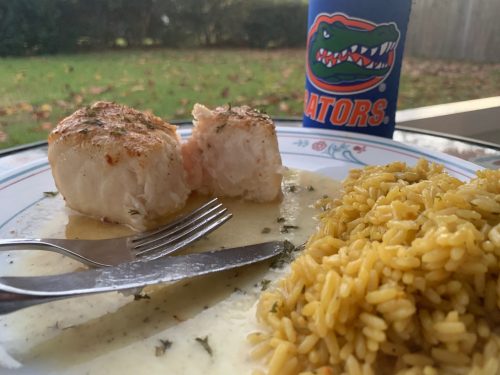A new article from NOAA fisheries has raised some eyebrows “U.S.-Caught Sharks are a Sustainable Food Choice“. It is important to understand this article is not talking about finning, the practice of only harvesting the fins for sale in Asia. NOAA is recommending that average American to consider having a shark steak now and again. Right about now you must be thinking “Aren’t we trying to save the sharks!?”. The answer is yes, but it’s not that simple. So let’s break it down.
Many shark populations across the globe are endangered or threatened. This is thanks to the fin trade, trophy hunting, and unintended bycatch. So the numbers of many species are low and we need more baby sharks to replace the stock. Problem is that most sharks are very slow to reproduce; they don’t become sexually mature until later in life and have small litters. So an animal could take a decade to mature and have one offspring a year. Sadly, this rate of reproduction isn’t fast enough to replace all the sharks we are losing. But this isn’t true of all species or even all populations of a species. NOAA presents an important point that of the forty-three species they manage in US waters only about ten are of conservation concern, and none are listed currently as endangered. In other words, the US fisheries believe the country’s shark populations to be healthy. However, it is difficult to assess pelagic or open water marine populations because they are highly mobile and can be hard to locate. Think about that. If I tell you to go find shark A that lives in open water in the middle of the Atlantic, you’d be like “That’s a lot of blue on the map.” and you would be right. So it is important to air on the side of caution with these things. NOAA scientists understand this problem better than most, so if they say a population is healthy, it is because they have a lot of data and a lot of time in the blue of the map to show it. So I say we can trust them on this one.
So let’s assume we have enough sharks locally for a sustainable fishery. But are they even safe to eat? Many large sharks have high levels of mercury in their meat. This dangerous chemical builds up in predators at the top of the food chain. All the plants absorb a tiny amount of toxin, then the little fish eat a lot of the plants so they have a medium amount of toxin. Finally, the top predator comes along and eats all the little fish, and as a reward for its hunting prowess gets a larger build-up of the toxin. Predators like swordfish, tuna, and large sharks. This process is called biomagnification, throw that word out to your mom sometime. It has seven syllables so you will sound really smart. Anyway, it’s a bad idea to consume a large top predator because then all that toxin, i.e. mercury, ends up in you. So it’s best to stick to the little or medium-sized fish. Sharks are fish…and some are little or medium… For example, blacktip sharks are a small coastal species targeted by recreational anglers. They have made a dramatic recovery from the 1990s, thanks to the work of scientists and anglers alike.
In the US we enjoy the benefits of arguably the most successful conservation model in the world. Unfortunately, many people have no idea how it works. Conservation efforts, whether it be a forest ranger’s paycheck, scientific study, or habitat restoration are paid for by hunting and fishing taxes. Tax from the sale of fishing licenses and equipment goes to the national and state levels to protect and support freshwater and marine environments. This is all part of the Dingell- Johnson Act (hunting has its own equivalent act, the Pitman-Robertson). It’s a hard concept to wrap your head around I know. Killing something helps its population as a whole thrive. We in the US have very strong science-based management. Meaning we have biologists monitoring population’s size and health. So if an area has a booming population of species X, state scientists up the limit or number of animals that can be harvested in a season, in order to keep that population at a size that is sustainable for the local environment. It’s very easy to forget the natural world in this day and age or have a disconnected understanding. But there are private citizens who want to have a personal relationship with their food are paying to hunt and a little more to protect the whole habitat. These sportsmen and women are invested in that particular species or habitat and are often citizen scientists or even volunteers helping with conservation efforts.
So let’s sum it all up:
- Some sharks populations are in trouble, but not all
- Larger sharks aren’t safe to eat, but smaller sharks are
- Fishing for sharks helps raise money for their protection as well as other species
- It’s ok to eat some sharks just not all
If you are curious about all this buy shark at your local fish market, buy a fishing license, say thank you to the anglers in your life. Enjoy the natural world and a nicely grilled blacktip steak.
